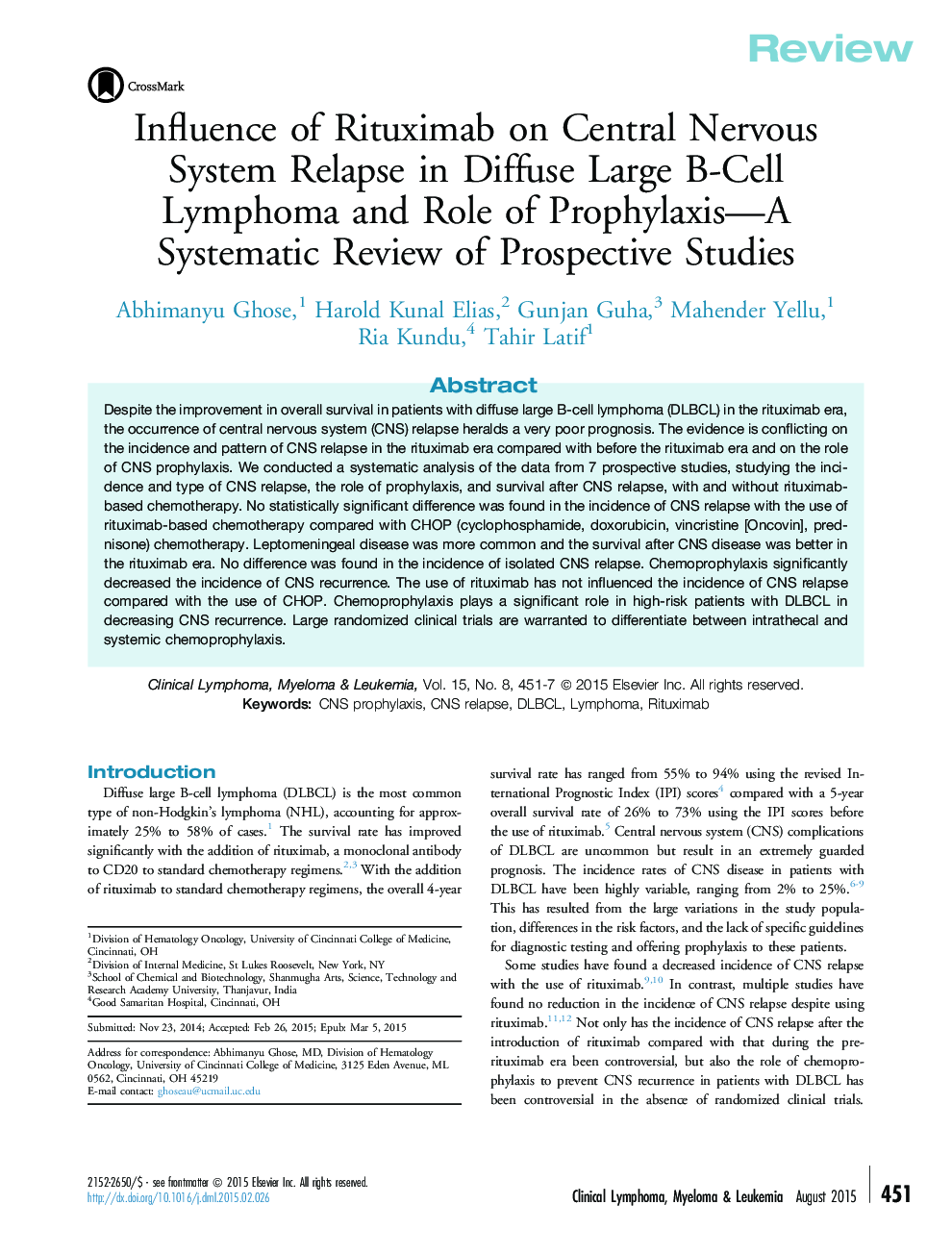| Article ID | Journal | Published Year | Pages | File Type |
|---|---|---|---|---|
| 2754530 | Clinical Lymphoma Myeloma and Leukemia | 2015 | 7 Pages |
Despite the improvement in overall survival in patients with diffuse large B-cell lymphoma (DLBCL) in the rituximab era, the occurrence of central nervous system (CNS) relapse heralds a very poor prognosis. The evidence is conflicting on the incidence and pattern of CNS relapse in the rituximab era compared with before the rituximab era and on the role of CNS prophylaxis. We conducted a systematic analysis of the data from 7 prospective studies, studying the incidence and type of CNS relapse, the role of prophylaxis, and survival after CNS relapse, with and without rituximab-based chemotherapy. No statistically significant difference was found in the incidence of CNS relapse with the use of rituximab-based chemotherapy compared with CHOP (cyclophosphamide, doxorubicin, vincristine [Oncovin], prednisone) chemotherapy. Leptomeningeal disease was more common and the survival after CNS disease was better in the rituximab era. No difference was found in the incidence of isolated CNS relapse. Chemoprophylaxis significantly decreased the incidence of CNS recurrence. The use of rituximab has not influenced the incidence of CNS relapse compared with the use of CHOP. Chemoprophylaxis plays a significant role in high-risk patients with DLBCL in decreasing CNS recurrence. Large randomized clinical trials are warranted to differentiate between intrathecal and systemic chemoprophylaxis.
